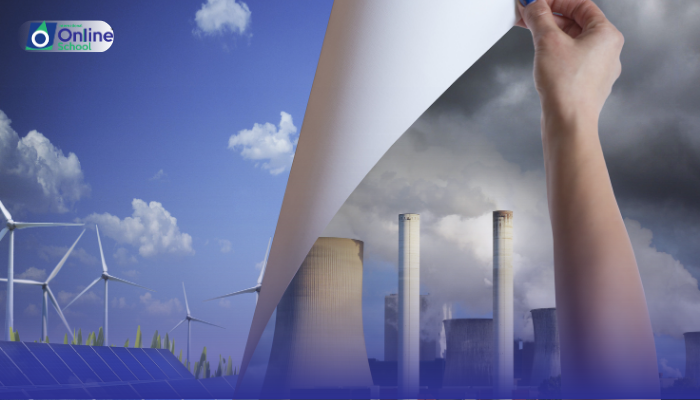
Learning Outcomes:
i. Differentiate between conventional and non-conventional energy resources based on their source and usage.
ii. Identify common examples of conventional and non-conventional energy sources found around the world.
iii. Analyze the advantages and disadvantages associated with each type of energy resource.
iv. Discuss the role of diverse energy options in achieving a sustainable future for our planet.
Introduction:
Imagine a world without power - dark streets, silent homes, and machines standing still. Energy, the lifeblood of our modern world, comes from diverse sources, each with its own story to tell. Today, we embark on a journey into the world of energy resources, differentiating between the familiar giants like fossil fuels and the emerging heroes like the sun and the wind. By understanding their strengths and limitations, we can contribute to the crucial discussion on powering our future in a sustainable way.
i. The Familiar Giants: Conventional Energy Resources:
For generations, we've relied on conventional energy sources:
Fossil fuels: Coal, oil, and natural gas, formed from the remains of ancient organisms, are the workhorses of the energy industry, generating electricity, powering vehicles, and heating homes. Imagine vast coal mines, sprawling oil fields, and towering pipelines, symbols of our dependence on these powerful but finite resources.
Hydropower: Harnessing the power of falling water from dams, this source generates clean electricity, but construction can disrupt ecosystems and displace communities. Imagine mighty rivers harnessed by dams, a testament to the potential and challenges of hydropower.
ii. The Rising Stars: Non-Conventional Energy Resources:
Seeking alternatives to fossil fuels, we're turning to renewable options:
Solar energy: Capturing the sun's radiant light through solar panels, this source offers clean and limitless potential. Imagine rooftops adorned with panels, silently converting sunlight into electricity.
Wind energy: Harnessing the wind's power through turbines, this source provides clean energy, but can be unreliable and impact landscapes. Imagine wind farms on rolling hills, their blades spinning in the breeze, whispering promises of green energy.
Geothermal energy: Utilizing the Earth's internal heat, this source offers a constant and sustainable option, but requires access to hot springs or underground resources. Imagine accessing the Earth's hidden warmth, a reminder of the power beneath our feet.
Biomass: Burning organic materials like wood or crops can generate energy, but raises concerns about deforestation and emissions. Imagine fields converted to energy crops, a balancing act between renewable potential and environmental considerations.
iii. Balancing the Scales: Advantages and Disadvantages:
Each resource comes with its own trade-offs:
Conventional: Fossil fuels are readily available and efficient but contribute to greenhouse gas emissions and air pollution. Hydropower is reliable but can disrupt ecosystems.
Non-conventional: Renewable sources like solar and wind are clean and sustainable but can be intermittent and require technological advancements. Geothermal offers constant power but requires specific geological conditions. Biomass can be renewable but raises concerns about resource management and emissions.
iv. Powering a Sustainable Future: A Diverse Energy Mix:
The future of energy lies in a diverse mix:
Investing in renewable energy research and development: Advancements in technology can improve efficiency and affordability of renewable sources.
Promoting energy efficiency: Reducing our overall energy consumption through conservation and smart practices is crucial.
Balancing environmental and economic considerations: Finding solutions that address both energy needs and environmental sustainability is key.
The world of energy resources is a dynamic landscape where familiar giants are challenged by rising stars. Understanding their strengths and limitations empowers us to make informed choices and advocate for a diverse energy mix. By embracing sustainable practices, investing in renewable technologies, and fostering collaboration, we can power our future responsibly, ensuring a world where energy illuminates not just our homes, but also our path towards a brighter, greener tomorrow.